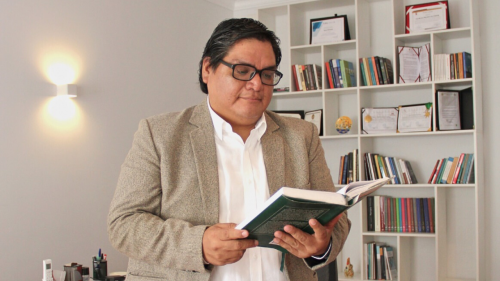Case study: Upholding an unexplained wealth judgement in Kenya’s Anglo Leasing affair

This case study examines a 2021 unexplained wealth (illicit enrichment) case in Kenya involving a former Chief Accountant at the Treasury, Patrick Ochieno Abachi.
The case is related to Kenya’s so-called Anglo Leasing scandal, in which 18 high-value government security contracts were allegedly awarded to fictitious companies in the early 2000s. It illustrates one set of circumstances in which civil unexplained wealth (or civil illicit enrichment) legislation can be an extremely useful tool to target assets stolen through corruption.
The series of judgments has provided some valuable insights into Kenya’s law targeting unexplained assets, specifically:
- its key features and how they are applied;
- the evidentiary importance of asset declaration forms;
- how to prove assets are “unexplained” through financial analysis of a suspect’s income and assets; and
- common legal challenges to illicit enrichment.
Phillip Kagucia, Assistant Director at Kenya’s Ethics and Anti-Corruption Commission (EACC), which is leading the case, spoke to Andrew Dornbierer, Asset Recovery Specialist and author of the recent open-access book Illicit Enrichment: A Guide to Laws Targeting Unexplained Wealth. Chapter 5 of book contains a contribution by Kagucia on Kenya’s law and its application.
The Basel Institute’s International Centre for Asset Recovery (ICAR) has been supporting the EACC with case mentoring and capacity building since 2013.
About the case: the accumulation of unexplained assets through corrupt procurement contracts
Patrick Ochieno Abachi was a Chief Accountant at the Kenyan Treasury at the time of the Anglo Leasing scandal, which involved a suite of government procurement contracts allegedly being awarded at inflated values to phantom companies.
Abachi is not among the 20 former politicians and businesspeople charged with criminal offences in relation to the scandal. Yet in March 2021, the High Court of Kenya found that Abachi had used his position as Chief Accountant to acquire unexplained assets around the time the Anglo Leasing contracts were awarded, in accordance with Section 55 of Kenya’s Anti-Corruption and Economic Crimes Act 2003 (ACECA).
Abachi’s sudden increase in wealth during this time could not be justified by reference to his lawful income as a public servant, which was below USD 1,000 a month.
The court ordered the confiscation of several bank accounts, KES 1.9 million (USD 17,000) in cash, five luxury vehicles, five properties and nine plots of land from Abachi. Some of these were registered in the names of Abachi’s wife, children and companies associated with him.
Although Abachi applied for a stay pending appeal, claiming he would suffer losses if the State were to forfeit the assets, the High Court quashed the application in July 2021 because there was no demonstrable loss in respect of assets the same court had declared to be unexplained.
Further appeal opportunities exist, but there is a definite chance that the case will finally be determined in favour of the EACC. The properties and vehicles would then be liquidated and the money ultimately forfeited to the public treasury.
Legal strategy: Why target unexplained assets through civil action?
Kenya’s ACECA provision targeting "unexplained assets" is a form of qualified civil illicit enrichment law, meaning that proceedings under this provision take place in civil courts rather than criminal courts. This is useful in cases where a criminal conviction for corruption or abuse of office is not possible, but where there is still strong evidence that the public official has inexplicably accumulated an amount of wealth that cannot be justified by reference to their legal income.
After examining the facts in Abachi’s case, the EACC deemed it would be difficult to obtain the direct evidence of specific corrupt behaviour that is necessary to bring a criminal case. On the other hand, there was clear evidence that Abachi had amassed a large amount of unexplained wealth during the period in which the corruption scheme took place, and Kenya’s ACECA provisions still provided the EACC with an avenue to target these assets.
The characteristics of the case also meant that there was a strong chance of success in an unexplained assets claim. Specifically, there was:
- A clear time period for the investigation (2002 to 2007 – the time during which the fictitious Anglo Leasing contracts were approved and payments were made);
- A reasonable suspicion of corruption or economic crime (due to Abachi’s role as Chief Accountant at the Treasury responsible for making or overseeing payments, including the alleged illicit payments to the phantom companies);
- Assets whose value were provably disproportionate to the official’s known sources of income during that period (which they significantly were, given his modest salary and the amounts declared on his asset declaration form); and
- No clear satisfactory explanation for the disproportionate assets (as Abachi was not able to provide this during the investigation)
How the EACC established that Abachi’s assets were "unexplained"
The investigators performed detailed financial analysis to demonstrate that Abachi’s assets were vastly disproportionate to his legal sources of income during the period from 2002 to 2007.
During the period, the EACC was able to establish that Abachi was making regular significant deposits to bank accounts and had acquired properties worth around KES 80 million (USD 736,000), despite his modest salary and lack of pre-existing wealth.
A key piece of evidence was the biennial Declaration of Income, Assets and Liabilities that Kenyan officials must submit when they enter public service. This document is generally quite important in such actions. It can be used to establish the suspect’s declared wealth at the start of the period under investigation, and provides a good foundation for analysis.
Additionally, for obvious reasons, corrupt officials will often deliberately avoid declaring stolen money on this form – and proof that certain assets were undeclared can also add weight to arguments that they were not acquired legitimately.
Challenges, delays and appeals
While the action to date has been successful (pending appeal), the process has been a long one – or as Judge Mumbi Ngugi noted in her March 2021 decision itself: “This matter has had a rather long sojourn in our courts."
The unexplained assets law in Kenya is still in its early days of development, however, so these delays were somewhat expected.
One reason for an initial delay was a lack of clarity regarding the court process itself. Due to the presence of land among the assets, the case was first referred to the court’s specialist land division, where it struggled to proceed. Following the establishment of a specialised Anti-Corruption and Economic Crimes division of the High Court, the case was transferred accordingly and made progress.
A second reason for the length of proceedings to date has been the significant number of legal challenges made to the law – or in the words of the Judge Ngugi, since the original summons was issued, “a series of suits, petitions and applications have derailed the hearing”. This, too, was not wholly unexpected – as mentioned above, the law is still somewhat in its infancy in Kenya and a number of legal questions regarding it still need to be considered.
Beneficial ownership: what about assets under another’s name?
A particular challenge for the EACC in the Abachi case related to beneficial ownership, since many of the assets were registered in the names of his wife, children or companies that he controlled.
These parties were listed as defendants in the court judgement, which is possible in Kenya because the illicit enrichment law applies to any legal or natural person. (In other jurisdictions, it sometimes applies narrowly to public officials.)
Evidence from the EACC’s financial investigation showed clearly the flows of money, proving that the assets were bought with money that came into Abachi’s possession and that he was in fact their beneficial owner. The fact that these parties did not make any significant effort to defend their ownership of the relevant properties also somewhat convinced the judge that it was Abachi himself who was the true owner.
Beneficial ownership is fairly new territory in Kenya, setting a precedent that persons accused of illicit enrichment will no longer be able to hide their assets behind companies, relatives or friends. Assets that have been illicitly obtained remain illicit, no matter how many transactions or transfers of ownership they undergo.
The road ahead for illicit enrichment legislation in Kenya
Although the law was introduced in 2003 in Kenya, it was first applied only in 2008 in long-running but ultimately successful cases against James Mwathethe Mulewa (former head of Kenya’s Port Authority) and Stanley Mombo Amuti (former National Water Conservation and Pipeline Corporation Finance Manager). The decision in the Court of Appeal over the Amuti case set the precedent for unexplained wealth cases in Kenya.
Since then, the EACC has seen a 100 percent success rate in subsequent cases, with several million USD recovered in total.
Many more cases are under investigation currently or going through the courts. It is hoped that cases will be resolved more speedily as prosecutors and judges at the Anti-Corruption and Economic Crimes division of the High Court become more familiar with the law, and as investigators gain skills in obtaining evidence of illicit enrichment through financial investigation and techniques such as Source and Application analysis.
The slow start-up phase of Kenya’s law is common among jurisdictions that have illicit enrichment legislation of one form or another, since it is a relatively novel area of law. Yet as Kenya’s EACC (and corrupt politicians and officials) are discovering, it is a powerful tool in the country’s fight against corruption. Plus, alongside its strong civil forfeiture mechanism, it can also play a key role in the recovery of criminal proceeds.
Learn more
To learn more about illicit enrichment and how different jurisdictions are introducing laws targeting unexplained wealth, see:
- Illicit Enrichment: A Guide to Laws Targeting Unexplained Wealth by Andrew Dornbierer. The book is freely available online to view or download at illicitenrichment.baselgovernance.org, along with a database of laws.
- For a brief introduction, see our quick guide to illicit enrichment, also available in French, Spanish and Portuguese.
Source and Application of Funds analysis is a method for investigators and prosecutors to calculate and obtain evidence of unexplained assets in cases such as the one described in this study. See:
- Quick guide to analysing a suspect’s financial affairs in a corruption case by the ICAR training team
- Technical guidance for investigators and prosecutors: Proving illicit enrichment using financial investigation and Source and Application of Funds analysis (Annex II of Illicit Enrichment)
- A free eLearning course on Source and Application analysis on the Basel LEARN virtual learning platform.


